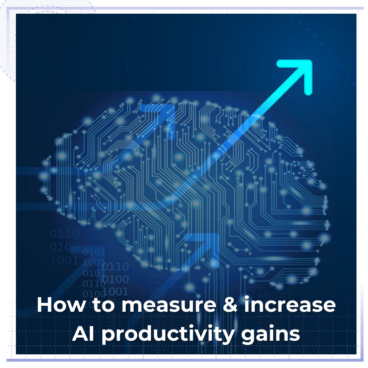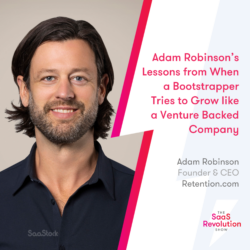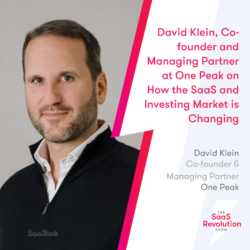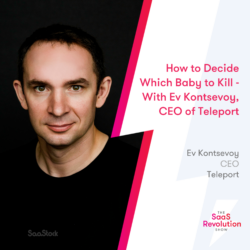This post was originally published in our SaaStock Blueprint newsletter. Subscribe now to get insights like this, straight to your inbox.
Bessemer Venture Partners recently released its 2024 State of Cloud Report and this year, vertical AI takes the spotlight.
The prediction? Vertical AI’s market capitalisation will be at least 10x the size of legacy vertical SaaS.
In the report, BVP highlights three vertical AI models of note:
- Copilots: Large language models (LLMs) used to automate tasks like writing code. Already the most competitive, BVP predicts that by 2030, copilots will be so prominent that the majority of corporate software developers will be more akin to software reviewers.
- Agents: Using AI to fully automate workflows on behalf of humans, for example voice and video technology used to scale sales and marketing output. According to BVP, voice AI applications will unlock $10B of software TAM over the next five years.
- AI-enabled services: The automation of traditionally outsourced services like accounting, billing, and legal writing. BVP is already seeing these AI services taking share from market incumbents.
These three models have all seen huge growth in the last two years and it’s easy to see why. They all come with the promise of helping us work smarter, faster, and more efficiently. In this post, we’ll unpack the truth behind these promises – looking at what it takes to leverage AI to enable your teams and how, once implemented, you can measure the impact on productivity and ultimately your business’ growth.
The AI hype cycle
According to GitLab CMO and CSO Ashley Kramer, now is the time to find out. She explained:
“Different technologies go through these hype cycles. I’d argue that right now we’re at the tip or maybe even now finally starting to come down from the [AI] hype, which is the exciting part. Once you get through the hype, you start to see the implementation, the usage, and the productivity around it.”
It marks a great time for leaders to really look at AI usage, both internally and in terms of what others are doing to see where the productivity opportunities lie.
From my conversations, most agree that the best use of AI is using it to do your job better. As a leader, part of that is enabling your team to automate the tasks that do not need their brain power. Not so you can replace them with AI but so you can deploy their efforts where they add the most value.
Ashley told us that most of the hype in relation to GitLab is AI copilots that can write code for developers. While on paper that sounds like a productivity booster, she explained why it’s important to go a little deeper. On the one hand, it might help you ship faster but she questions whether more code is actually better, more secure, and more valuable. Instead of just using AI to write code, GitLab’s approach is to look at where AI can be implemented end to end in its software development to make the whole process faster, more efficient, and more secure.
The three T’s of productivity
GitLab’s approach is refreshing compared to a lot of what you read about AI usage, which often focuses on volume–whether that be lines of code or pieces of content.
Then, it takes it further still by actually measuring the productivity gains seen from the use of AI. They do this using the three Ts:
- Time: Is it saving time? For your developers, is AI creating code saving them time or are they spending more time writing test suites and looking into security as a result?
- Task: Are you getting those now automated tasks done in a faster, more secure, and more efficient way?
- Team: Does the use of AI allow your team to communicate and collaborate more effectively?
In addition to measuring AI usage in terms of productivity, Ashley advocates for measuring customer satisfaction too, she explained:
“…You should always measure it both [ways]. Yes, run the internal CSAT and compare it to six months ago when maybe you weren’t leveraging as much of this but also for customers. Are they still just as happy? Because you can get into this cycle where AI is being leveraged frequently and your employees are happy but your customers aren’t… It might be because you’re shipping too fast or it’s because you’re not as secure.”
The power of AI in sales
Where copilots are transforming software development, AI agents are changing the game for SaaS sales processes.
Skaled CEO Jake Dunlap spoke to me about this on the podcast and on stage at SaaStock USA. He has strong views on it, even going as far as to say that the average sales person should be worried about AI in relation to their job security. Why? Not because AI can replace your sales reps but because you can be more efficient with reps who leverage AI to be better at their job.
AI use cases for sales reps
For Jake, the most effective sales teams today will commit to AI and technology proficiency. That is, really understanding (and staying up to date with) what these tools are capable of. As of now, here are some of the top use cases for sales reps:
- Research: Using AI to gather industry insights or get a deeper understanding of your target personas.
- Getting to V1: Armed with research, AI can get reps to V1 of an email or pitch in minutes rather than hours.
- Understanding performance: AI can analyse performance and deal progress to help you make data driven decisions about where to focus.
With AI automating these tasks, your reps can provide value by adding the context specific to a buyer’s scenario and needs. For example, if they’ve used it for V1 of an email, they can edit and QA the content until it’s differentiated and adds real value for the buyer.
AI use cases for sales leaders
Both Jake and Sales Consultant Kevin Dorsey noted that sales reps are making better use of AI than their leaders.
Kevin argued that sales leaders should be using AI everywhere. He highlighted just some of the ways that AI can help leaders boost productivity across their team:
- Onboarding, training, and development: Using AI for interactive learning, including role-playing with AI agents.
- Pattern recognition: AI can analyse recent deals to find trends and provide valuable insights. For example, by using AI to analyse call notes, communications, and other data, you can better understand why teams are winning or losing deals.
- Forecasting: AI can make unbiased, data-driven decisions on the likelihood of deals closing. While a rep’s gut feeling is important, Kevin suggested it should really only count for 20% of the decision.
Kevin also recommends having AI developers shadow your team for a day to help identify new opportunities for automation.
However you view AI, the next few years are going to be fascinating to watch. Remember, “This is the worst AI is ever going to be, right now and it can already mimic voice, it can already mimic facial expressions, it already has the data, and it can already connect the dots”. And so the message is clear, start your AI journey now. Use it, experiment with it, and keep up to date with new capabilities. But don’t do it in vain – measure the impact it’s having on your team productivity and customer satisfaction and iterate accordingly.
Recommended media





